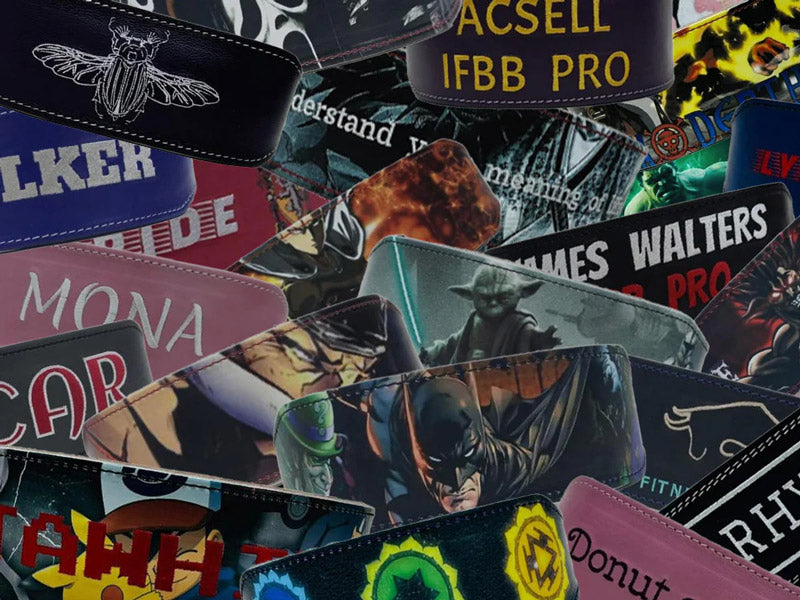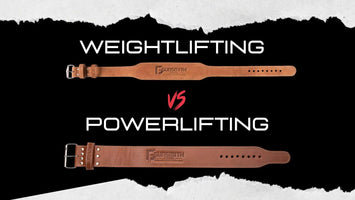
Using Elbow Sleeves and Wraps: Enhance Weightlifting and Powerlifting Performance
Weightlifting and powerlifting are physically demanding sports that require proper support to prevent injuries and optimize performance. You've seen those strongman/powerlifting videos? Yep, they are usually wearing sleeves or wraps. Make yourself comfortable, get yourself a cup of tea/coffee, this is going to be a long one...
One of the essential pieces of support gear used by athletes in these disciplines are elbow sleeves and elbow wraps. These helpful accessories not only decrease the risk of injury by providing joint stability, but they also enhance performance by aiding in muscle warm-up and improving blood circulation in the affected area.
Elbow sleeves are typically made of materials like neoprene, which provides compression and improved muscle tissue oxygenation. This compression has a number of benefits, including enhancing the performance during short bouts of exercise and keeping those joints warm for improved connective tissue health. On the other hand, elbow wraps are adjustable elastic straps that can be tightened around the joint for customized support and stability.
While both elbow sleeves and elbow wraps serve similar purposes, each has its own unique characteristics, their own pros and cons, making them suitable for different lifting situations and personal preferences. Whether you're a seasoned athlete or a beginner, understanding the distinctions between these two types of support gear can help enhance your weightlifting or powerlifting experience and avoid potential injuries. Let's dig in.
Elbow Sleeves and Elbow Wraps
Functions
Elbow sleeves and elbow wraps serve similar purposes in the domains of weightlifting and powerlifting. Both provide support, compression, and increased stability for the user's elbows. The key difference between these two pieces of equipment lies in their design. Elbow sleeves are one-piece garments that users slip on, while elbow wraps are long pieces of material that users need to wrap around their arms.
Elbow Sleeves Design:
- One-piece
- Slipped on

Elbow Wraps Design:
- Long piece of material
- Wrapped around the arm

Benefits
So both elbow sleeves and elbow wraps offer various benefits for weightlifting and powerlifting, let's check out the details:
Support: Elbow sleeves and wraps provide crucial support to the elbow joints during strenuous exercises, helping to reduce the risk of injury.
Compression: The compression offered by both types of equipment aids in improving circulation and reducing inflammation, contributing to faster recovery times.
Stability: By providing additional stability to the elbow joints, elbow sleeves and wraps enable weightlifters and powerlifters to perform more controlled and precise movements during their workouts.
Warmth: The added warmth generated by elbow sleeves and wraps can help loosen up the muscles and increase flexibility, reducing the likelihood of strains and muscle tears.
Depending on the specific type of weightlifting or powerlifting activity, either elbow sleeves or wraps may be more suitable:
- Powerlifting: Elbow Wraps
- CrossFit: Elbow Sleeves
- Bodybuilding: Elbow Sleeves
- Strongman: Elbow Wraps
- Weight Loss-Focused: Elbow Sleeves
- One-Rep Max Training: Elbow Wraps
- Weekend Sports (e.g., flag football): Elbow Sleeves
There we have it, elbow sleeves and elbow wraps both serve essential functions and offer various benefits to individuals engaged in weightlifting or powerlifting. Their unique designs cater to different preferences and requirements, allowing users to select the most suitable option based on their workout routines and personal needs.
Types of Elbow Support
Elbow Sleeves
A popular choice for weightlifters and powerlifters as they provide uniform compression throughout the length of the sleeve, which can help increase blood flow, reduce inflammation, and aid in recovery.
To use an elbow sleeve, simply put your arm through the cuff and pull the sleeve up your arm until the top is in the middle of your tricep. Ensure that your elbow is completely covered and the bottom of the sleeve is on your forearm. Smooth out the sleeve for an even fit, and adjust as needed for comfort and support, then you're good to go.
Elbow Wraps
Elbow wraps are another option for weightlifters and powerlifters who require targeted support and adjustable compression around the elbow joint. They are usually made from nylon, cotton or polyester but come in the form of a long, stretchy band that can be wrapped around the elbow area according to the user's preference.
Using elbow wraps may be slightly more complicated than using elbow sleeves, they can be a bit fiddly if it you haven't used them before. First, ensure your wraps are clean and dry. Then, wrap one end of the elbow wrap around your wrist and bring it up to cover your elbow. Pull the straps tight and adjust them so they fit snugly against your arm without causing discomfort.
Elbow wraps come in different lengths, basically the longer the wrap, the more rotations you have. If you've got big chunky arms, you may need a longer wrap.
| Elbow Support Type | Material | Advantages | Disadvantages |
|---|---|---|---|
| Elbow Sleeves | Fabric: Neoprene | Easy to use, uniform compression | Less adjustable, less targeted support |
| Elbow Wraps | Fabric: Cotton, nylon, polyester | Adjustable, targeted support | More difficult to use |

In summary, both elbow sleeves and elbow wraps are designed to offer protection and support during weightlifting and powerlifting exercises. While sleeves provide uniform compression and are more straightforward to use, wraps offer adjustable compression and targeted support, allowing you to customize the level of support you need for a specific workout. Make sure to choose the right type of support and material for your needs and preferences to maximize your performance and minimize the risk of injury.
Proper Usage in Weightlifting and Powerlifting
Technique and Form
When using elbow sleeves and elbow wraps for weightlifting and powerlifting, it's essential to maintain proper technique and form. You want to ensure your kit does not hinder your range of motion or compromise your form.
Warm Up and Recovery
Integrating elbow sleeves and wraps into your warm-up and recovery routines can significantly improve performance and reduce the risk of injury. Here's how:
-
Warm Up: Wearing elbow sleeves or wraps during your warm-up exercises can help provide additional support, stability, and warmth to your elbow joints. This can lead to improved blood flow and reduced stiffness, preparing your body for more intense movements during your workout.
-
During Exercise: Elbow sleeves and wraps can help maintain proper joint alignment during exercises, such as bench presses or squats. They act as a gentle reminder to keep your form in check, minimizing the risk of straining or injury.
-
Recovery: Including elbow sleeves and wraps in your recovery routine can help reduce inflammation and prevent injuries by providing compression and support.
It's important to always use elbow sleeves and wraps as intended to help support your training goals and maintain your overall health and well-being. Keep in mind that the use of this equipment should not replace proper weightlifting and powerlifting techniques or act as a substitute for warming up and cooling down during your workouts.

Prevention and Management of Injuries
Tendonitis and Tennis Elbow
Elbow sleeves and wraps are beneficial in preventing and managing common weightlifting and powerlifting injuries, such as tendonitis and tennis elbow. These conditions occur due to overuse or strain on the forearm muscles and tendons, causing inflammation and pain. Some ways elbow wraps and sleeves help manage and prevent these injuries are:
- Reducing stress on tendons and muscles by providing support and stability
- Warming up the muscles and connective tissues before exercise, decreasing the risk of injury
Incorporating lightweight dumbbell exercises, such as wrist curls and reverse wrist curls, can also aid in preventing elbow injuries.
Joint and Ligament Support
During weightlifting and powerlifting, joints and ligaments undergo significant stress. Elbow sleeves and wraps help provide the necessary support to minimize joint and ligament injuries. They offer:
- Compression, which aids in muscle tissue oxygenation, enhancing performance during short bouts of exercise
- A balance of support and mobility, suitable for weightlifting, CrossFit, and bodybuilding workouts
When selecting elbow sleeves or wraps, ensure they fit snugly without causing discomfort.
Keeping these factors in mind, elbow sleeves and wraps can contribute to the prevention and management of injuries, promoting a safer and more effective weightlifting or powerlifting experience.
Performance Enhancement
Increased Strength and Stability
Elbow sleeves and wraps offer numerous benefits for weightlifters and powerlifters, particularly in the realm of performance enhancement. One advantage is the increased strength and stability when performing exercises like the bench press. By compressing the surrounding muscles and tendons, these accessories can provide additional support to the joint, helping to prevent injuries and giving athletes the confidence to handle more weight.
Moreover, elbow sleeves and wraps may also reduce the risk of muscle imbalances, as they assist in maintaining proper form during lifts by promoting correct joint alignment.

Improved Blood Flow and Oxygenation
Another performance-enhancing aspect of elbow sleeves and wraps is their capacity to improve blood flow and oxygenation. The compression provided by these accessories can facilitate increased blood circulation within the arm, which in turn helps to deliver more oxygen to the working muscles. This enhanced oxygenation is crucial for promoting muscle tissue oxygenation and assisting in the removal of waste products such as lactic acid from the muscle fibers.
Using compression wear may also reduce blood pooling in the limbs and prevent excessive blood lactate levels from building up, contributing to delayed onset muscle soreness. In this way, wearing elbow sleeves and wraps during weightlifting and powerlifting sessions can help athletes maintain optimal performance levels for longer periods.
Notably, these benefits not only apply to individuals performing heavy compound movements, such as in powerlifting, but also to those focusing on isolation exercises or involved in more general gym workouts. This makes elbow sleeves and wraps a valuable addition to any weightlifter's training arsenal.
Choosing the Right Fit and Accessories
Sizing and Material
When selecting elbow sleeves or wraps for weightlifting and powerlifting, it's crucial to consider the correct size for optimal support and comfort. Measure your bicep size and consult the manufacturer's size chart to determine the right sleeve size, generally between 0.5 to 2 inches (1.25 to 5 cm) smaller than your bicep measurement. Similar guidelines apply to elbow wraps, ensuring adequate compression and mobility.
Material is another important factor, as it directly affects comfort and durability. Neoprene provides excellent warmth, support, and durability, while spandex and polyester offer a high degree of flexibility and breathability. Consider your lifting goals and preferences to identify the best material for your needs.
Grip and Style
The grip and style of elbow sleeves and wraps can significantly impact a lifter's performance. For bodybuilders and athletes involved in weightlifting, it's essential to select a sleeve or wrap with a secure grip that prevents slippage during training. Look for features like anti-slip silicone or textured surfaces to ensure reliable stability.
When it comes to style, compression sleeves and wraps come in various colors and designs, catering to personal preferences. While aesthetics may not directly affect performance, wearing sleeves and wraps that suit your style can help improve confidence and motivation during workouts.
When properly chosen, elbow sleeves and wraps can provide crucial support and compression for weightlifters and powerlifters. By considering factors such as sizing, material, grip, and style, athletes can enhance their lifting experience and protect their joints, enabling long-term success in their training.

Additional Considerations
Frequency of Use
When utilizing elbow sleeves and wraps for weightlifting and powerlifting, considering the frequency of use is essential. While these accessories can help alleviate elbow pain and provide stability to the connective tissue, overusing them may lead to increased inflammation and reduced resistance in your joints. It is recommended to use elbow wraps and sleeves as needed, while avoiding constant use during training sessions. Allow your arms and elbows to build strength and resilience without over-reliance on supportive gear. They are probably going to get a little smelly after continued usage as well, make sure you wash them regularly!
Proper Care
Taking care of your elbow wraps and sleeves ensures their longevity and effectiveness. Here are some tips for proper care:
- Make sure your elbow sleeves or wraps are clean and dry before putting them on.
- Hand-wash them gently using mild soap and water after each use.
- Do not use bleach or harsh detergents, as these can damage the materials.
- Rinse thoroughly and air-dry them in a well-ventilated area, away from direct sunlight.
- Avoid wringing or twisting your sleeves or wraps as it may cause damage to the fabric.
Storage
Storing your elbow wraps and sleeves correctly helps maintain their shape and elasticity. Follow these guidelines:
- When not in use, don't leave your wraps and sleeves in a gym bag or an enclosed space. Moisture buildup can lead to unpleasant odors and potential damage.
- Store them unfolded, laying flat in a cool, dry place to prevent creases.
- Keep your wraps and sleeves separate from other equipment to avoid any snagging or damage to their exterior surfaces.
By following these steps, you can properly utilize elbow wraps and sleeves for weightlifting and powerlifting, facilitating optimal performance, and reducing the risk of injury, plus they'll last you longer.
Elbow Support in Other Sports
Elbow sleeves and wraps are not exclusive to weightlifting and powerlifting. They are also useful in other sports, such as wrestling, where athletes require additional support and stability for their elbows.
Wrestling involves intense grappling, with participants engaging in various holds and manoeuvres that place strain on the elbow joints. To protect against injuries and improve performance, wrestlers benefit from the use of elbow sleeves and wraps. These accessories provide the necessary compression and support, assisting in muscle tissue oxygenation and keeping joints warm for more effective warm-up.
As with strength training, the choice between elbow sleeves and wraps in wrestling is largely a matter of personal preference. Sleeves tend to offer more consistent compression and a smoother fit, while wraps are adjustable and can provide a more customizable level of support. Both options can assist wrestlers in preventing injuries, reducing joint pain, and enhancing overall performance.
In summary, elbow sleeves and wraps serve as valuable tools for athletes across various sports, offering essential support in physically demanding activities like wrestling. The choice between sleeves and wraps ultimately depends on an individual's needs and preferences, but both forms of elbow protection can significantly improve safety and performance in sports requiring high levels of elbow flexibility and strength.







